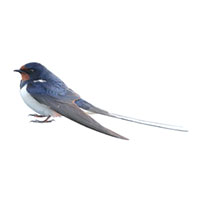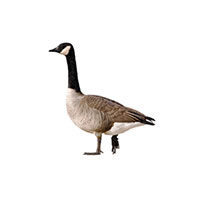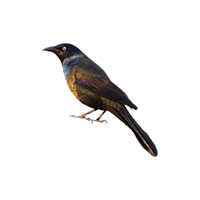Woodpeckers in Wisconsin
Woodpeckers are known for their hammering to establish territory, to find a mate, to evacuate a nesting hole, or to find insects. The hammering is the cause of conflict with humans because they don’t distinguish between trees and buildings. While the hammering is audibly annoying, the results can be destructive and expensive. The most common types of woodpeckers to be found in Wisconsin are the Downy Woodpecker, the Hairy Woodpecker, and the Pileated Woodpecker.
Woodpecker Diet
Feeds on a variety of insects, especially beetles, ants, caterpillars, and more. They are also fond of black oil sunflower seeds, millet, peanuts, and chunky peanut butter. Occasionally, downy woodpeckers will drink from oriole and hummingbird
Woodpecker Habitat & Nesting
Woodpeckers usually peck at dead or diseased trees/limbs, but they have also been known to peck at buildings, siding, metal, and air conditioners. They peck in order to find food, excavate areas for nesting, or create room for food storage. They are found mostly in or on the edge of wooded areas due to food prevalence and preference for living in or near trees. They can nest in structures, fences, poles, and signposts. A cavity is created by the male and female to make a nest in a dead limb or dead tree, usually 12-30′ above ground. The cavity entrance is often surrounded by fungus or lichen, helping to camouflage the site.
Woodpecker Mating & Life Cycle
These birds can have one or two broods per year, each with three to six young. White eggs are laid and incubation is done by both sexes for about 12 days. Both parents bring insects to feed the nestlings. The young leave the nest about 20-25 days after hatching but may follow the parents around for a few weeks.
Woodpecker Damage
Damage caused by woodpeckers in structures can range from holes in wood to damaged siding and air conditioning units, making woodpecker management vital. Woodpeckers usually hammer on wood surfaces for one of three reasons:
- It makes a satisfyingly loud noise that proclaims the bird’s territory
- The bird wants to excavate a nest or roost hole
- It is feeding on insects living in the siding
Woodpecker Prevention & Control
Woodpecker Prevention
Woodpecker prevention is based on physical barriers and scare techniques. Physical barriers created in pecking areas will help get rid of woodpeckers by preventing entry. Commonly these are made of steel mesh. Noise scare techniques are also effective in some cases. Remember, woodpeckers are protected and any prevention or woodpecker control is subject to compliance with federal law.
Woodpecker Control
Bird Control Services provides customized solutions to address bird concerns through removal, exclusion, and deterrence. Factors that determine the best method of control include an area of application, bird species, location, access. Spikes, netting, and electrical deterrents are the most commonly used solutions.
If issues with woodpeckers arise, count on a professional pest management service to take care of the problem knowledgeably and successfully. Bird services are limited to commercial clients.
Need help with Woodpeckers?
We'll call you! Leave your information below.
Pests Belong Outside!
Leave your information below and we will give you a call back.
"*" indicates required fields
*During normal business hours. After hours inquiries will be returned the next business day.






